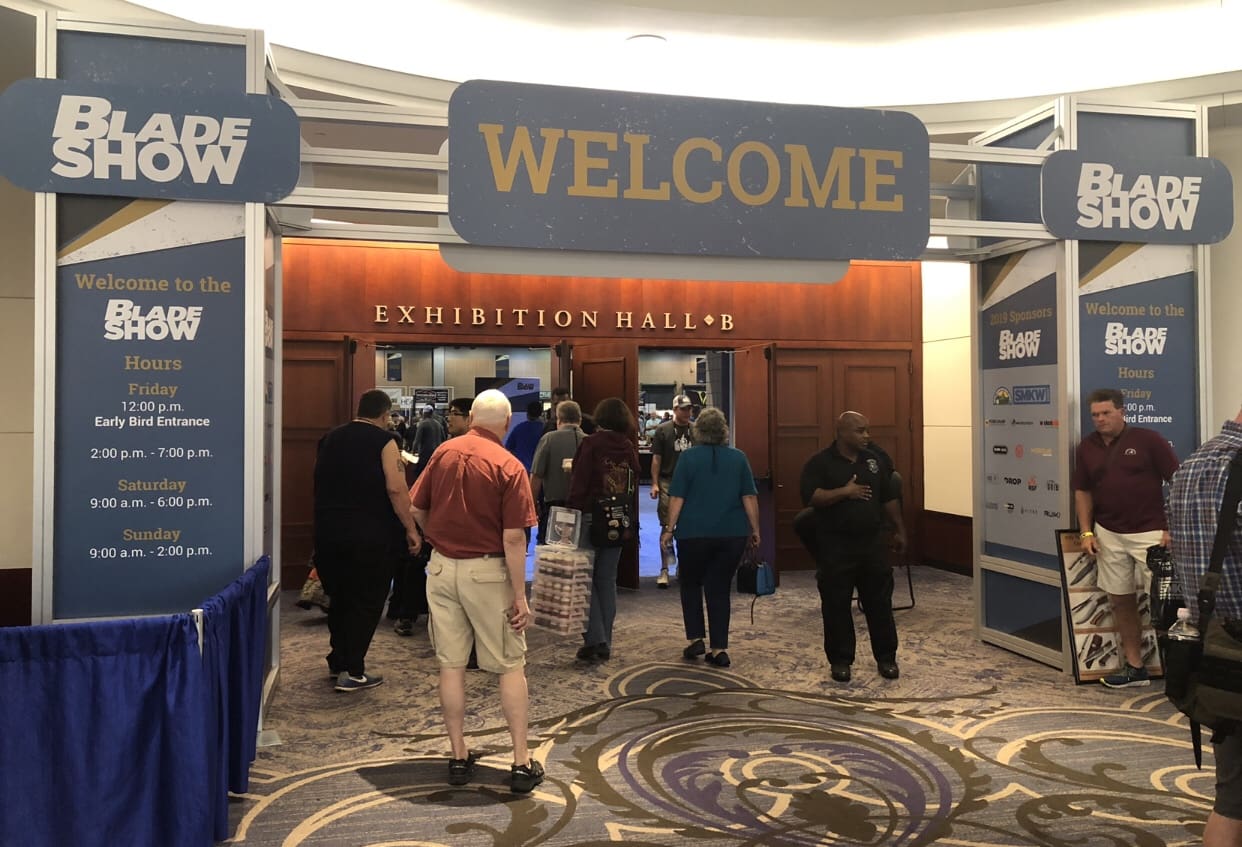
Welcome to two massive rooms full of cutlery, and…people, loads of people.

Welcome to two massive rooms full of cutlery, and…people, loads of people.
The TILO-3Z+ thermal was tested in military operation in Afghanistan for 12 weeks. Although the TILO-3Z+ was used on an almost daily basis, no technical problems occurred. Also, there were only minor traces of usage. This shows the absolute ruggedness and first-class workmanship of this small thermal imaging device.
The TILO-3Z+ was used as observation instrument mounted on a helmet as well as attachment to a scope 1.5-6 x 24 on an assault rifle. It was unproblematic to mount the device on an OpsCore Fast Ballistic helmet using the adapter provided. With the 30 mm adapter from ACTinBlack the TILO-3Z+ could also be easily attach to the scope.
Mounted on Helmet
It is standard to perform night missions with a night vision enhancement device in combination with a red dot sight. In our case the GPNVG from L3 Insight Technology as well as the Argus goggles from Theon Sensors were used. By attaching the TILO-3Z+ to the helmet, thermal imaging technology could be deployed quickly. The small form factor of the device facilitated this task. The GPNVG tubes are made with green phosphor. Therefore TILO-3Z+ was used with thermal filter “Cold Green” CG.
TILO-3Z+ could be easily positioned in front of the eye. It was compatible with the image enhancing technology. Both devices complemented each other perfectly. This increased the spotting ability of the user. TILO-3Z+ was used almost daily as shown on below pictures.
Later, the TILO-3Z+ was combined with Argus goggles. The goggles were installed as a monocular. The operator used them in front of his right eye, while in front of his left eye the TILO-3Z+ was mounted. To assure that both eyes are exposed to green light, also in this case the thermal filter “Cold Green” CG was applied. A clear image was obtained by collimation. This combination allows the use of both night vision techniques simultaneously which presented an invaluable tactical advantage.
The LEDs were also not used with the GPNVG goggles. This reason is: LED lights are positioned on front of the TILO-3Z+. If folded up, they point into the direction of the helmet. If folded down, they could be used but the TILO-3Z+ would block the field of vision of one eye, which is not ideal.
In combination with the Argus goggles the IR LED could be used. But with the ITT Gen 3 tube it was found to work only in total darkness due to its modest brightness (see also IR LED test).
Attached to a Scope
The TILO-3Z+ was attached to a scope from “Schmidt und Bender” 1.5-6 x 24 on an assault rifle. This was easy with the 30 mm camera adapter from ACTinBlack. Following the instructions from the handbook, zeroing and collimation was unproblematic.
During the tests steel objects (30 x 40 cm) were targeted at distances between 100 and 350 m. After being heated up by the sun they could be identified very well from 50 m. At distances from 150 m the limitations of the TILO-3Z+ in combination with a scope became apparent, as a proper identification of the targets was no longer assured.
The resolution of the sensor (320 x 256 pixel @ 60 Hz) in combination with the small objective and the attached scope are probably the limiting factors. To benefit from tactical advantages at more than 150 m, the premium model with 640 x 512 pixel in combination with a 3x ancillary lens should be choose.
It could be also considered to develop the TILO-3 further to become a clip-on thermal sighting system. To such a standalone device an adjustable crosshair would need to be added as well as a mount for a Picatinny rail.
In conclusion, the TILO-3Z+ mounted on helmet is an essential tool in tactical scenarios. Its thermal imaging capabilities provide strong support on the battlefield. Due to its low weight it does not disturb the user. The TILO-3Z+ is suitable only to a limited extend attached to a scope, as in this application its strengths are not fully exploited.
IR LED Test:
The IR LED of TILO-3Z+ was tested with following 3 different Gen 3 tubes for image enhancement to evaluate its brightness:
Goggles GPNVG from L3 Insight Technology Gen 3 L3 tube (green phosphor)
Goggles FGE from L3 Insight Technology Gen 3 tube (white phosphor)
Goggles Argus Panoptes from Theon Sensors Gen 3 ITT tube (green phosphor)
First the brightness was tested with residual light in an urban environment. All 3 tubes were activated. The luminosity of the LED had no visible effect. An image analysis was not possible.
In a second trial a residential container was darkened out completely. A printed comic target was position in about 12 m distance. 3 pictures were taken with each tube: 1 without LED light, 1 with LED light at lowest setting and 1 with LED light at highest setting.
Goggles GPNVG from L3 Insight Technology Gen 3 L3 tube (green phosphor)
No LED
Lowest Setting
Highest Setting
Goggles FGE from L3 Insight Technology Gen 3 tube (white phosphor)
No LED
Lowest Setting
Highest Setting
Goggles Argus Panoptes from Theon Sensors Gen 3 ITT tube (green phosphor)
No LED
Lowest Setting
Highest Setting
Conclusion IR LED Test:
The IR LED of TILO-3Z+ works with the Gen 3 tubes of known US manufacturers. The paper target could be identified easily as well as the depicted weapon. Precondition is complete darkness and a relative short distance to the illuminated medium. The range of the IR LED of TILO-3Z+ in combination with the 3 image enhancement goggles is 20 to 30 m (Note: The real images are significantly better, than those captured on photo.).
Overall Conclusion: The TILO-3Z+ was found to be a felicitous thermal imaging device which has enormous strength in combination with night vision enhancement googles. This device is also a useful companion at hunting grounds.
It was a pleasure to carry and test the TILO-3Z+. Many thanks to Andres Industries for this opportunity.
Comment by Andres Industries regarding IR LED test:
The boost obtained with the American Gen 3 tubes was far less effective than it would have been with European tubes as those enhance much better the longwave light emitted by the IR LED.
ACTinBlack: actinblack.lu
ANDRES INDUSTRIES: www.andres-industries-shop.de
SPARTANAT: www.spartanat.com
Soldiers of the US Army, patrolling the German/Czech border.
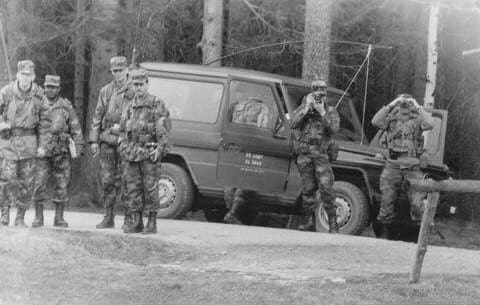
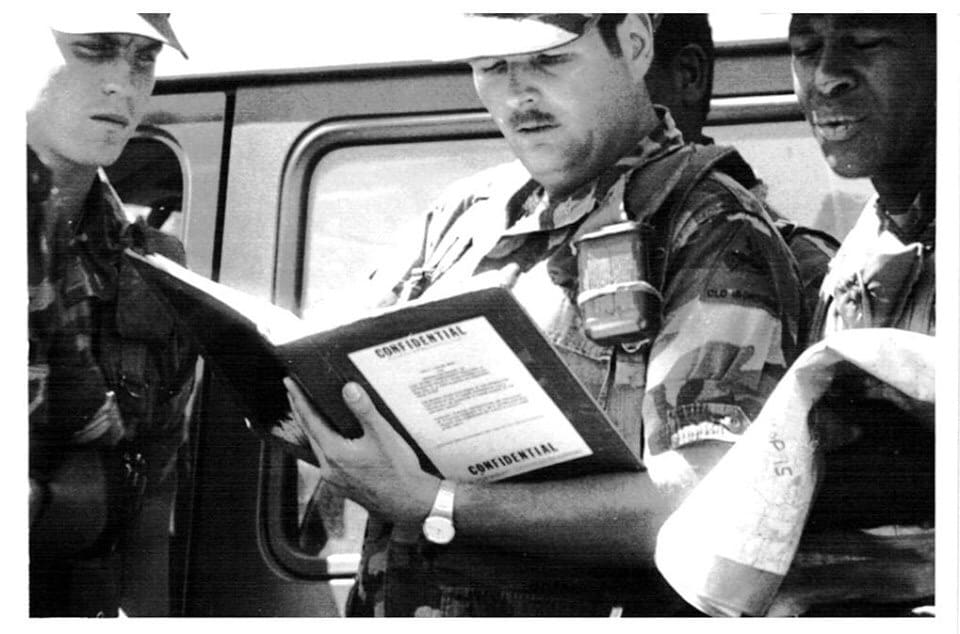
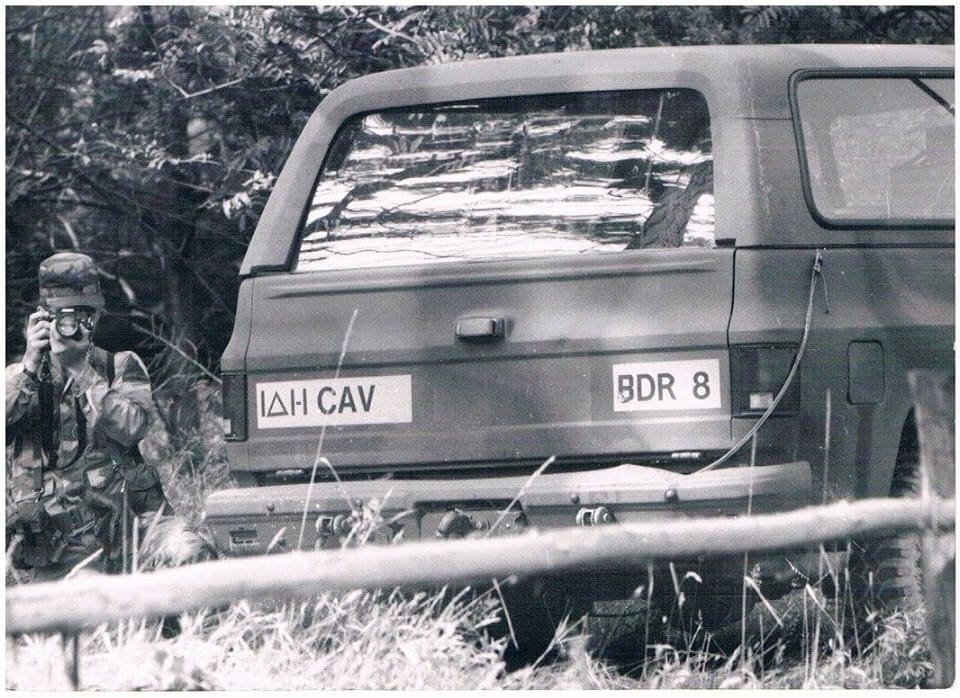
Photos were taken by a Czech Pioneer Service Guard.
With the launch of the Synergy 360 Light, a year and a half ago and success stories regularly coming in from the field, where do we go from here? Answer: We expand.
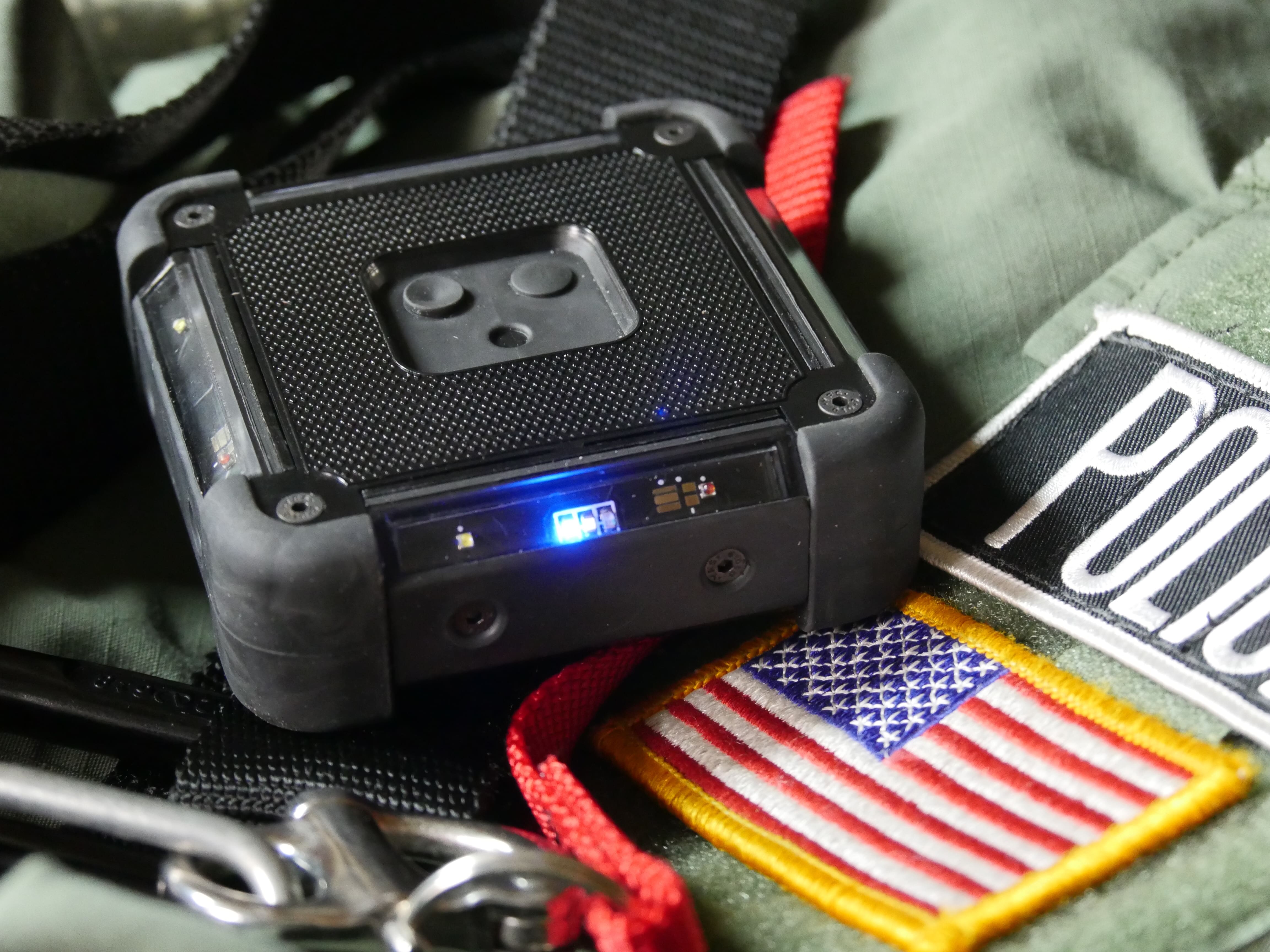
Originally designed as a throwable tactical light that can provide illumination to an entire area rather than a limited space, smart planning has led to new applications and LED configurations. Today, the 360 can run programs ranging from illumination, marking, motion activation and distraction and can switch from visual light to IR automatically. One application that exploits this feature is designed to be thrown into a room and strobe visual light disorienting a target just long enough to cause a pupillary response. The unit will then switch to 950 nm IR to provide clear NVG illumination and a tactical advantage for operators.
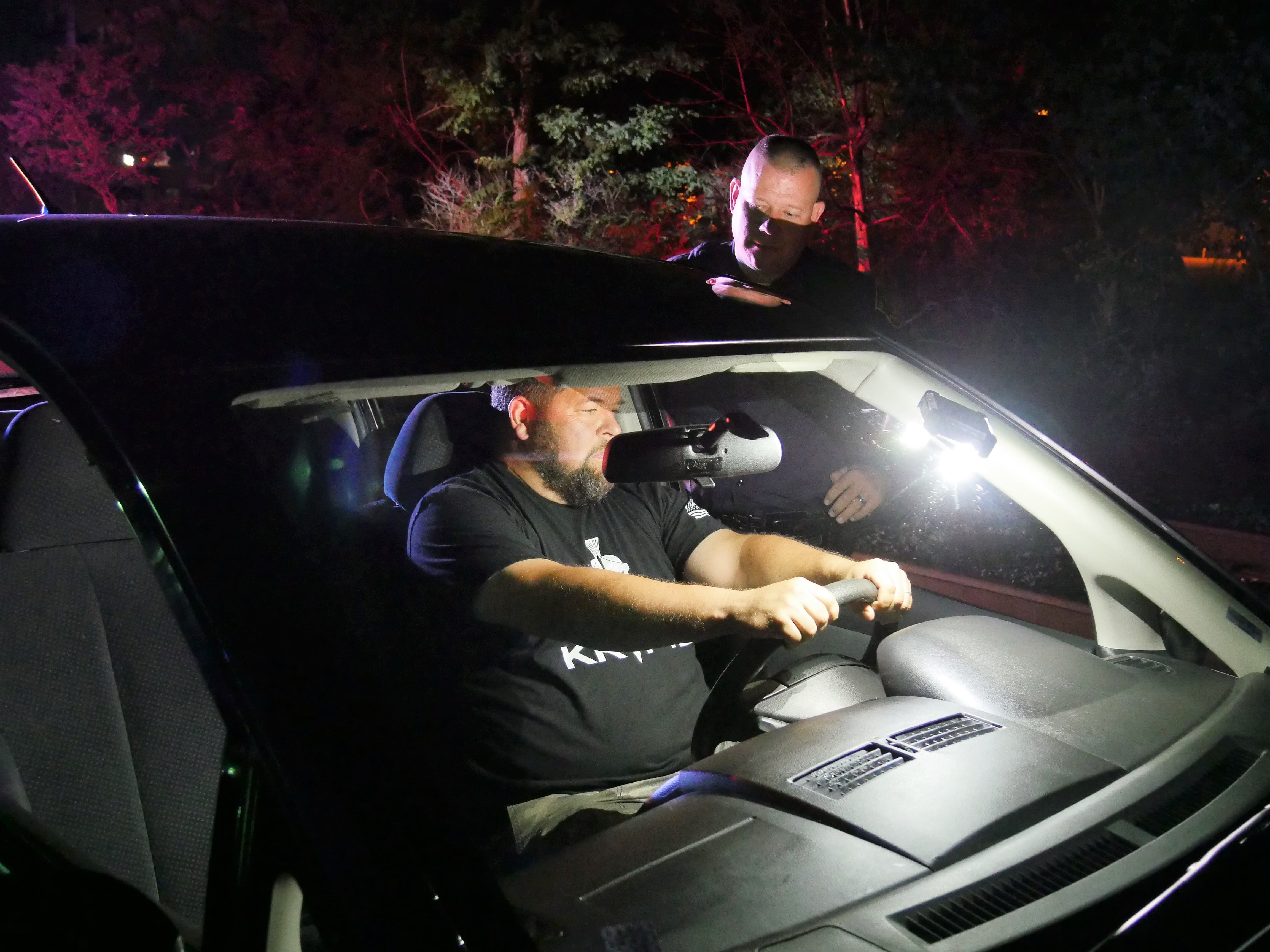
The Synergy 360 Light was designed to grow. While the 360 was still on the “drawing board”, engineers added components that wouldn’t be immediately needed in the initial programming phase. Today this has paid off in the launching of the 360’s latest and greatest software referred to simply as “Version 16”.
If Version 16 had to be summarized in one word “Dependability” would likely be it. At the heart of Version 16 is a redundant operating system that can repair corrupted code and manage operations in environments previously thought impossible.
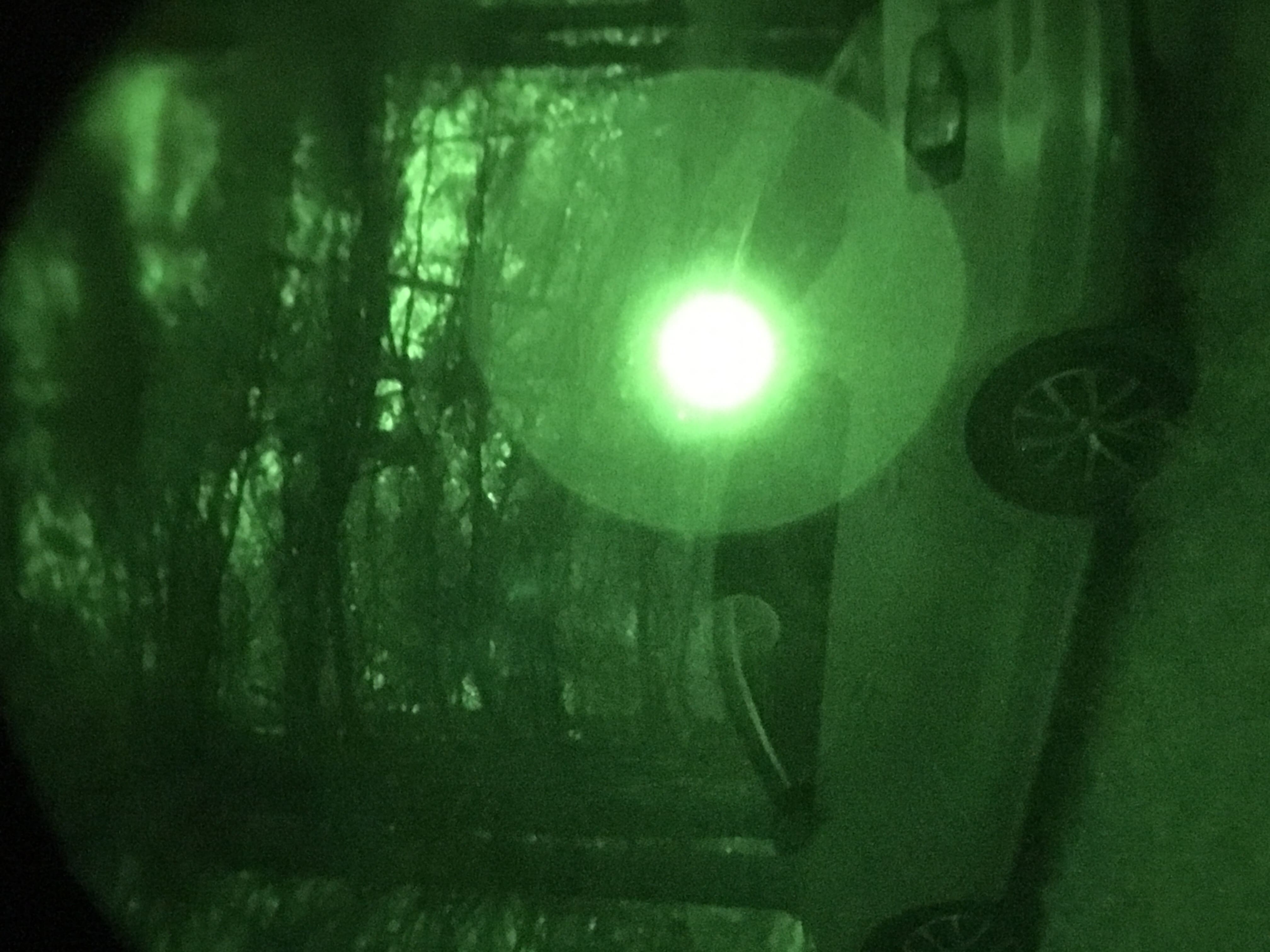
The 360 software is intuitive. When deployed, the unit constantly monitors the its status and will employ counter measures so that it can continue to carry out the mission even if physical damage to the unit has occurred. (View demo videos of the 360 at: www.youtube.com)
Building on the 360’s solid engineering and production foundation, Synergy Light has expanded their product line and continues to take on new challenges. Recently production has begun of the “SLB4”, a new marking IR spectrum beacon which is unlike anything else on the market today. The most obvious difference between the SLB4 and other IR spectrum beacons is size and weight. Measuring less than 1.5” square by 7/16” tall and weighing in at less than 25 grams the waterproof unit (currently tested to 350 FSW) can be concealed on targets with much less concern of detection than larger models. Currently, 850 nm, 950 nm units have been tested and the results are impressive. (View demo video at: www.youtube.com) Despite its miniature size, the unit’s IR light is detectible through unmagnified NVG’s from 1 mile away and can run constantly for 20 to 40 days depending on the flash mode. The units themselves are housed in an anodized aluminum case. While 850 nm units will be the first to be released, 1550 nm units have already been designed and will follow.
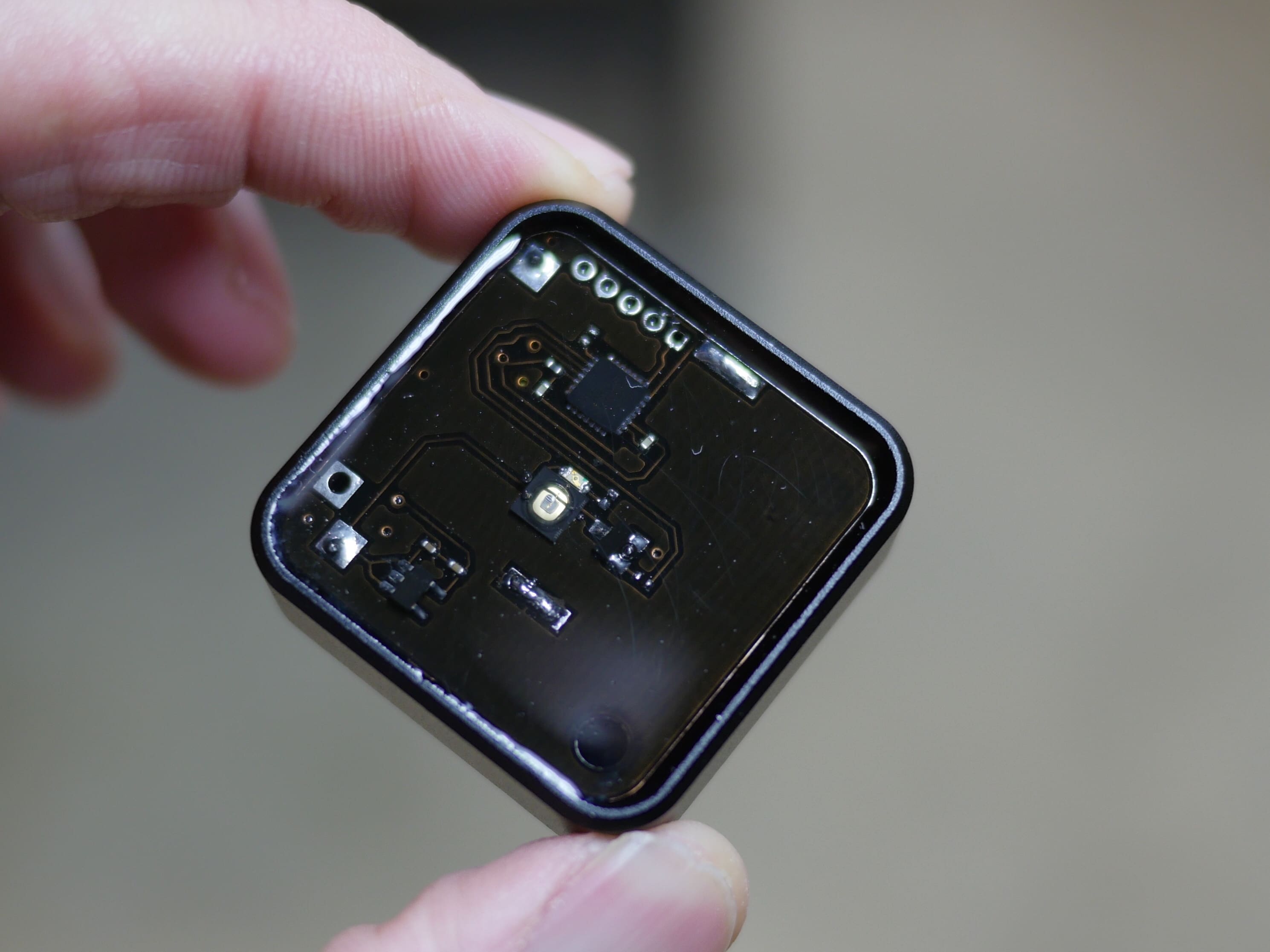
For more information about the SLB4, Synergy 360 and other quality products offered by Synergy Light go to www.synergylight360.com or email Synergy Light at synergylight@outlook.com
– Chief Bronson Sends
Get Ready for Hunting Season at the SIG SAUER Academy with the Ballistic Data Xchange (BDX) Optics System Course
NEWINGTON, N.H., (June 6, 2019) –SIG SAUER Academy, the leading provider of the highest quality firearms instruction and tactical training in the world, is pleased to announce the addition of the Ballistic Data Xchange (BDX™) Optics System Course to the upcoming class schedule.
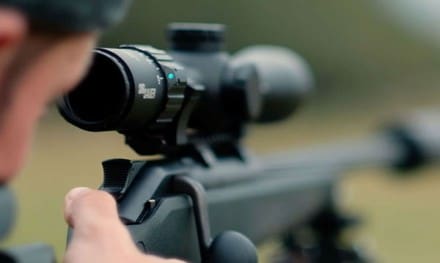
The SIG SAUER Electro-Optics Ballistic Data Xchange Optics System combines traditional hunting equipment with technology. BDX is a fully integrated rangefinder and riflescope system that utilizes Applied Ballistics Ultralight and Bluetooth™ using an Android or iOS device to calculate and illuminate the exact holdover dot for the perfect shot. BDX™ is simple, fast, and intuitive – just connect the dot.
The BDX Optics System Course explores the practical understanding of the complete BDX system and its application for hunting, training, and competition for the precision scoped rifle shooter. Students in this one-day course will learn how to operate the already easy to use BDX system, and apply their skills on the range with the BDX system shooting multiple targets at varying distances.
A complete BDX system will be provided to all class participants for hands-on-use and training.
The first offering of the Ballistic Data Xchange (BDX) Optics System Operator is June 18, 2019. To register and review the course outline for Ballistic Data Xchange (BDX) Optics System, or review the comprehensive course offering for SIG SAUER Academy visit sigsaueracademy.com.
Shop today for 15% off of the entire WildThingsGear.com site and reward the hardworking dads in your life with some new gear!
Click the link for “WILD” Father’s Day deals: https://www.wildthingsgear.com/
Sale runs June 7th-17th. Feel free to contact us at cs@wildthingsgear.com with any questions. Stay WILD!
This week, the Marine Corps Systems Command issued a Request for Information to Industry, seeking a Berry Amendment compliant Integrated Helmet System.
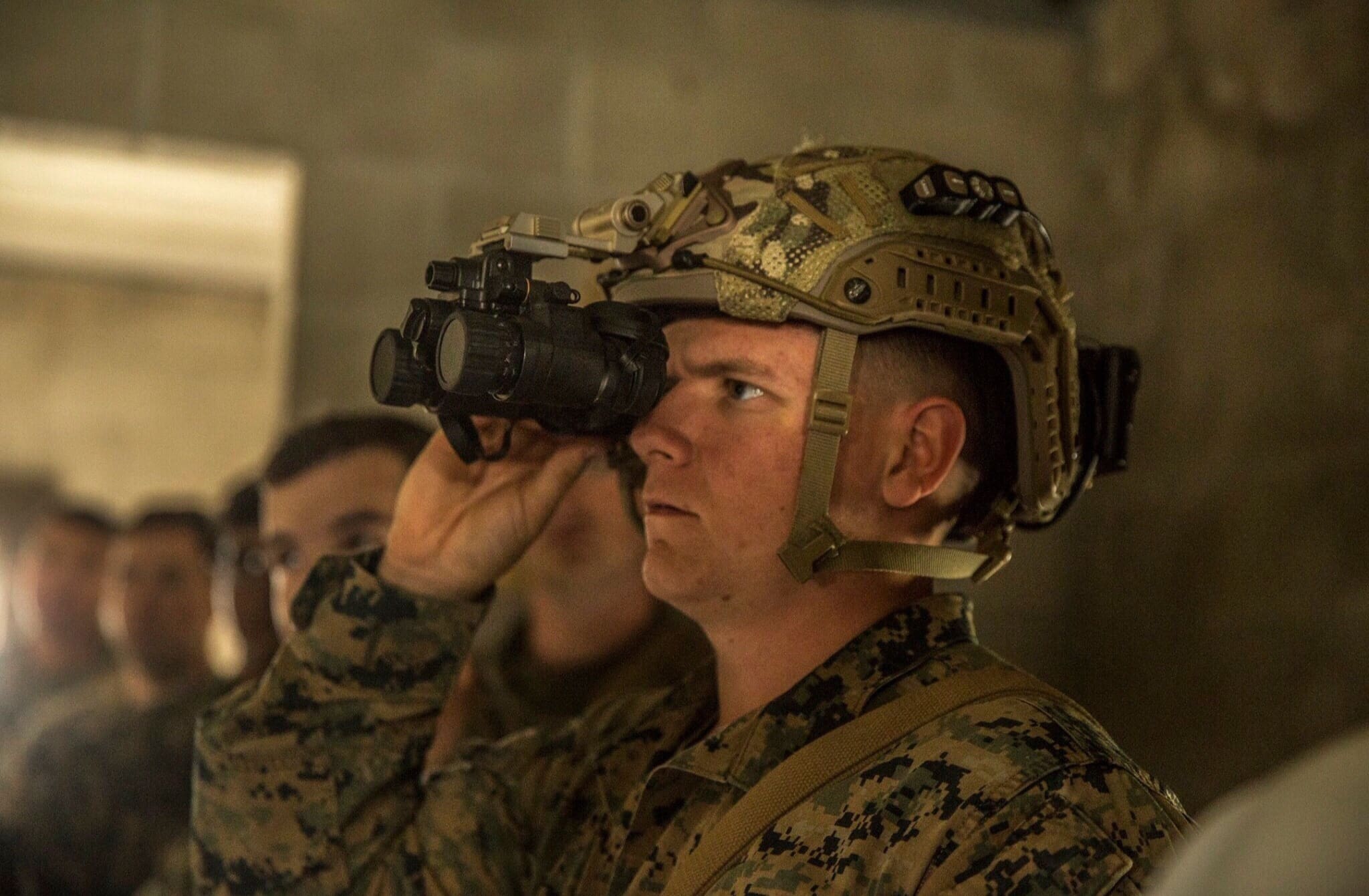
Just last year, the Marines evaluated mid and high cut helmets during Urban Advanced Naval Technology Exercise 2018 (Urban ANTX-18) at Camp Pendleton, California and purchased a small number of Enhanced Combat Helmets in these shapes for further testing.
The Marine Corps envisions IHS as a lightweight helmet system (includes shell, suspension, retention system, and other mounting devices) that will provide an integrated head protection platform for infantry and infantry-like Marines. The IHS will be employed by male and female Marines under various environmental conditions for long durations in conjunction with other gear and equipment. With the increased number of battery powered optics and other attachments to the helmet, the amount of exposed/unsecure wires and battery packs are increasing. The Marine Corps is looking for an optimized configuration to allow power and/or data to flow to the attachments while minimizing bulk.
In addition to a universal, modular mounting system for all components that allows for compatibility with legacy and future capabilities, IHS must be compatible with the following:
– Communications/hearing protection
– Night Vision Devices including external battery components
– Power cable management or power transfer
– Eye protection
– CBRN Equipment (mask and cover)
– Standard Marine Corps clothing
– Oxygen mask
– Rail system to mount ancillary devices
– Body armor
– USMC Pack
Here are the desired ballistic capabilities of IHS:
Minimum V50 BL(P)s

Additionally, the finished helmet, including any hardware exposed on the outside of the shell (if hardware is used for any attachments), shall be resistant to penetration from a 9 mm FMJ RN bullet at 1400 (+50, –0)ft/sec at 0° obliquity.
IHS must also protect from bump or blunt impacts. At a minimum, no individual acceleration shall exceed 150 G (gravitational constant) at 10ft/s. Greater impact protection (i.e., fewer G) is desired.
Below are the maximum weights by size.
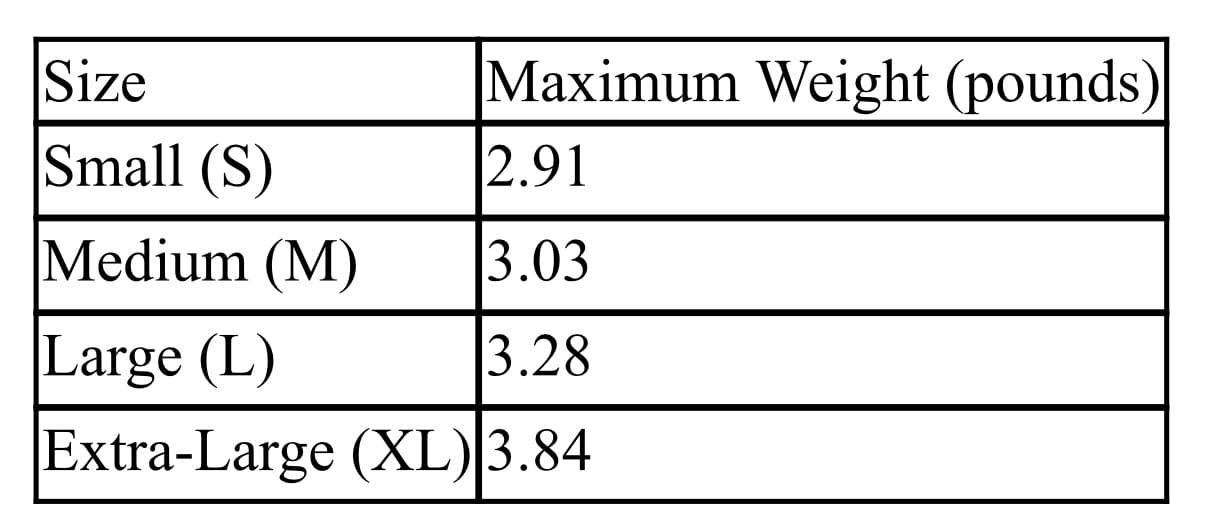
Once again, the Marines plan to use Mid Tear Acquisition to conduct an “Other Transaction Agreement (OTA)” a process which is being used more and more to quickly test and field mature technologies and equipment. In the event a contract is awarded, the minimum order will be 24,000 IHS, delivered within one year of First Article approval.
Those interested have until 5 July, 2019, at 11:59 Eastern to submit.

Mike Pannone is a former operational member of U.S. Marine Reconnaissance, Army Special Forces (Green Beret) and 1st SFOD-D (Delta) as well as a competition USPSA pistol shooter holding a Master class ranking in Limited, Limited-10 and Production divisions. He has participated in stabilization, combat and high-risk protection operations in support of U.S. policies throughout the world as both an active duty military member, and a civilian contractor. After sustaining a severe blast injury Mike retired from 1st SFOD-D and worked as a Primary Firearms Instructor for the Federal Air Marshal Program in Atlantic City and the head in-service instructor for the Seattle field office of the FAMS. He also worked as an independent contractor and advisor for various consulting companies to include SAIC (PSD Iraq), Triple Canopy (PSD Iraq), and The Wexford Group (Counter IED ground combat advisor Iraq and pre-deployment rifle/pistol/tactics instructor for the Asymmetric Warfare Group). Mike was also the Senior Instructor for Viking Tactics (VTAC), and Blackheart International. He started his own consulting company full time in late 2008.
Presented by SureFire